Dhwani – The sound of nature
Introduction:
The idea of designing an off-grid campus in one of the 5 extreme yet powerful sites around the globe paved the way for an interesting master-plan for all the sites. Barcelona, R.M.I.T., Shenzhen, Taliesin and India – from Urban to tribal in its true sense, interpreted and studied by tribe members from different cultural backgrounds gave us the privilege to be exposed to a sea of knowledge.
Shillim (India):
Located amidst a forest along the Western Ghats which span from Gujarat to Tamil Nadu, Shillim offers spectacular landscape within few hours of major metropolitan cities. Considering the fact that there is an existing Hilton hotel on site, it is important to take necessary steps in the form of action plans to curb the commercial activities on site.
Action Plan:
To set up an institute/ organization/ community which, with their work create awareness of sustainability, climate change and cultural roots as against the existing commercial activities on the site.
Steps:
1. To initiate a campaign in and around the nearby cities and ask for feedback
2. Start with a prototype and research on the response from the users
3. Start growing network and make a charter
4. Contacts will grow thru’ goodwill which will initiate a revolution
5. The existing commercial activities slowly start to reside to make way for a new system

Concept:
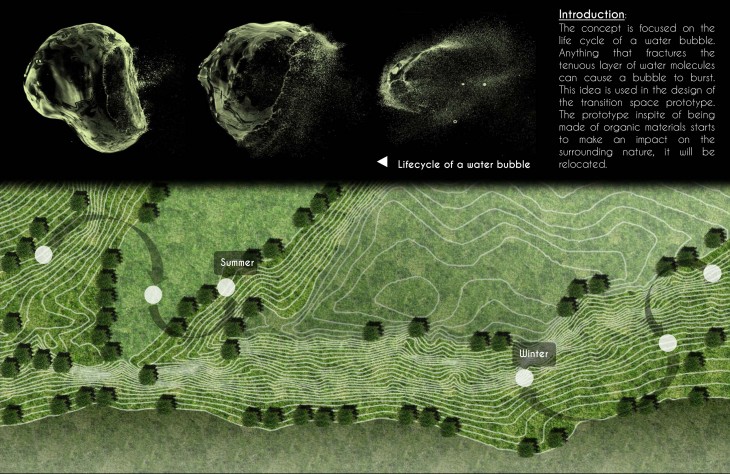
Considering the fact that we will have a floating tribe to not disturb the natural habitation around, it was important to design a structure that acts like a bubble. The concept is focused on the life cycle of a water bubble. Anything that fractures the tenuous layer of water molecules can cause a bubble to burst. If the nail is wet, and the bubble is thick enough, you can pierce a bubble many times without it popping. The water on the nail gives the water molecules in the bubble something to hold onto so the bubble will remain intact. This idea is used in the design of the transition space prototype. The prototype inspite of being made of organic materials starts to make an impact on the surrounding nature, it will be relocated. However, if it merges with the environment, the prototype can remain stationary for a long time.
Design:
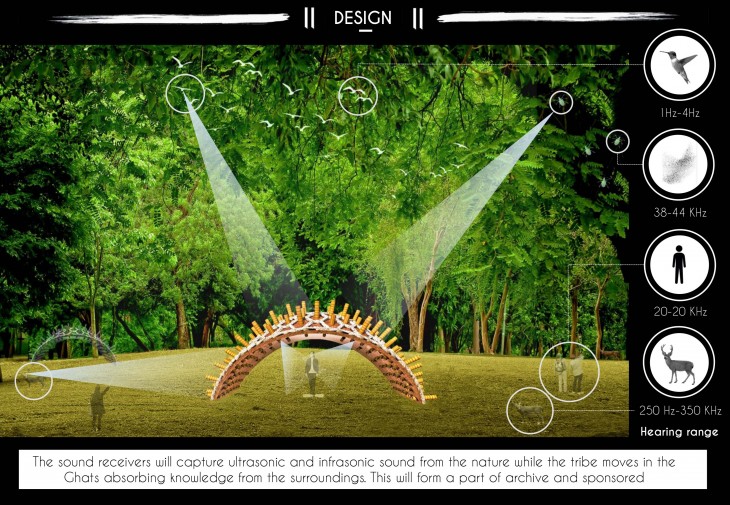
The prototype will move along with the tribe capturing sounds of nature and capturing every detail on the way from a leaf falling to the formulation of the products and research work performed in the course of their journey. It will be located along the exhibition spaces where the users will go through them experiencing the infra and ultrasound of the nature along with the journey of the tribe recorded before. This will expose them to a never before experienced treasure of natures audible just like the animals do in the night. The phrase ‘as deaf as a bat’ will apply to fellow humans and spaces will be experienced through hearing sense more.
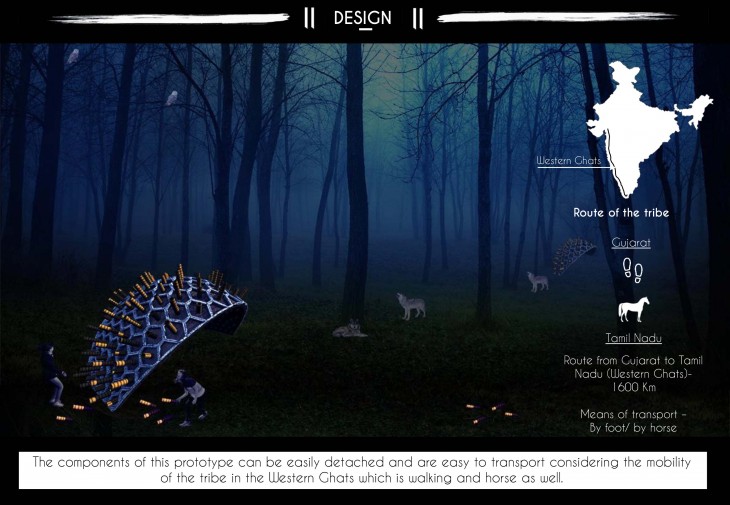
As mentioned, the tribe will move from Gujarat to Tamil Nadu and making the prototype mobile, it will be very easy for the tribe to dismantle it and carry it wherever they go. This will help us to capture all the details of the tribe movements and will give a different user experience considering the size of Western Ghats.
Materials used:
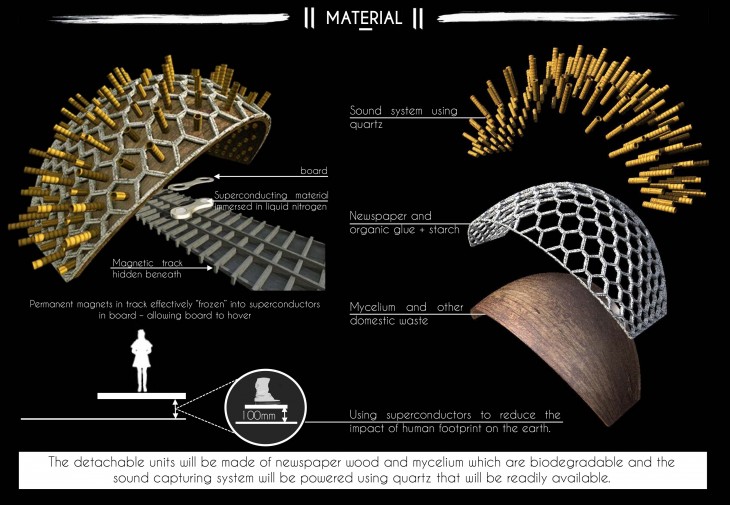
Quartz:
Crystals of some materials (such as quartz) vibrate very fast when you pass electricity through them—an effect called piezoelectricity. As they vibrate, they push and pull the air around them, producing ultrasound waves. Piezoelectric crystals also work in the reverse way: if ultrasound waves traveling through the air happen to collide with a piezoelectric crystal, they squeeze its surface very slightly, causing a brief burst of electricity to flow through it. So, if you wire up a piezoelectric crystal to an electric meter, you get an instant ultrasound detector.
Newspaper + organic glue + starch and mycelium:
Trees to wood to paper – paper to wood to useful objects. It is made by coating individual sheets of old newspaper with glue, starch and then tightly rolling the glued sheets into logs. The glue used is solvent and plasticizers-free. The strength of the material is based on the strength of the glue which is organic and the entire product is biodegradable. A way to grow wall insulator and packing materials using mycelium, a bacteria found in rotting organisms like tree trunks and agricultural byproducts. If placed in a mold, these organic matters grow to the desired shape within a couple of days. This is particularly useful because traditional insulating and packing materials tend to be non-biodegradable.
Archive:
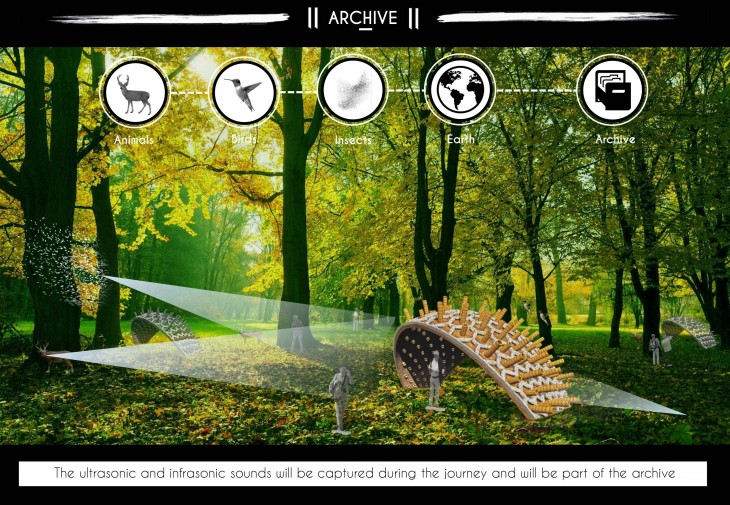
The sounds thus captures along the movement of the tribe will be used as an archive and will be accessible to people who sponsor the prototype. This will be rather interesting as it will be a never before experience for the tribe and the owner as well opening doors for research. The same cannot be owned permanently as it will disintegrate considering the life-span of the materials and will be owned temporarily by different people giving an opportunity to many for the same.
Energy:
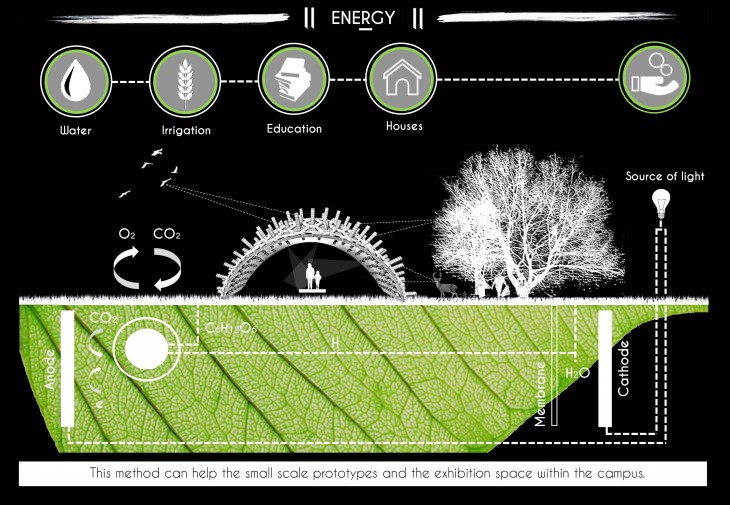
Electrons are a waste product of bacteria living around plant roots – plants excrete organic matter into the soil, which is broken down by bacteria. In the breakdown process electrons are released. It is possible to harvest them using inert electrodes and turn them into electricity, without affecting the plant’s growth in any way. This will help us to generate clean electricity around the world in any suitable wetland or wet area – including rice paddy fields, mangroves and salt marshes. This method can help the small scale prototypes, production lab and the exhibition space within the campus. The tubular system needs to be incorporated to generate electricity on a large scale which again needs no digging and is sustainable like other method.
Logistics:
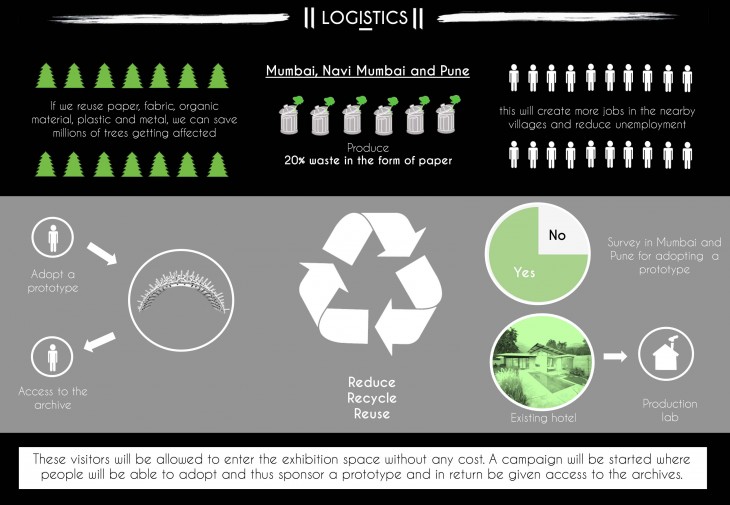
Mumbai, Navi Mumbai and Pune are around 110, 89.1 and 54.8 kms respectively from Shillim. This gives an added advantage considering the number of people coming from these cities for a weekend trip to this Oasis. Mumbai, Navi Mumbai and Pune produce around 20% of waste per year in the form of paper and cardboard. This paper can be recycled for the prototypes that need to be developed. The visitors instead of giving away get the waste paper to the site, it can be used for the construction of the prototype. These visitors will be allowed to enter the exhibition space and production lab without any cost. A campaign will be started where people will be able to adopt and thus sponsor a prototype and in return be given access to the archives of the respective prototypes thereby.
Model photographs:
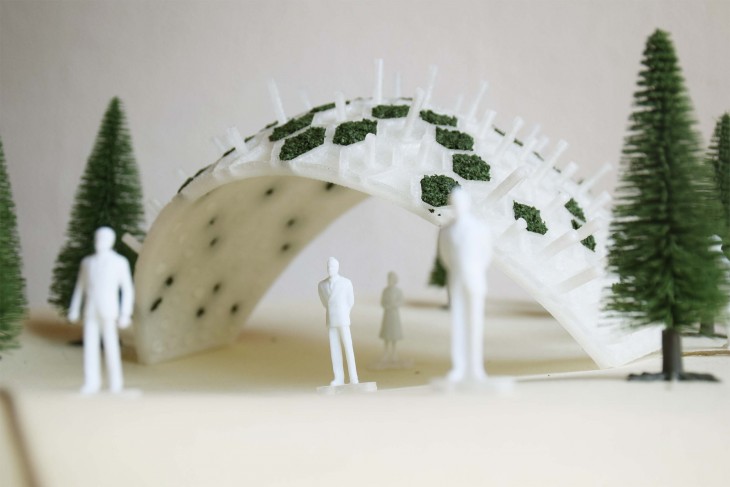
The power of sounds of nature within the prototype
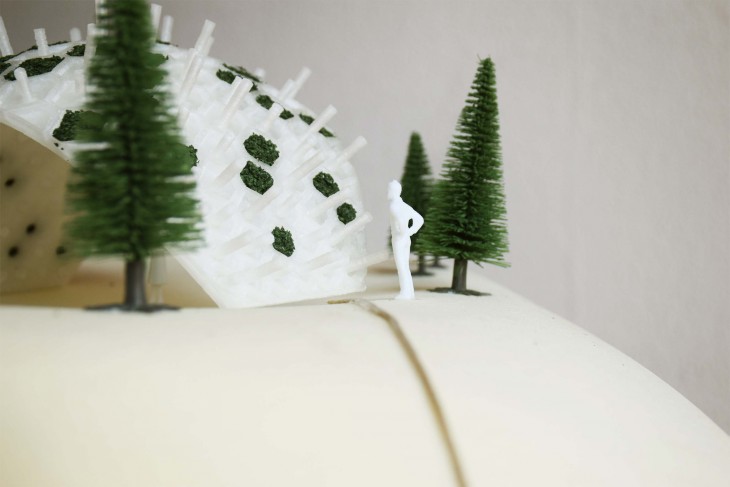
Showing detachable bamboo acting as sound detectors
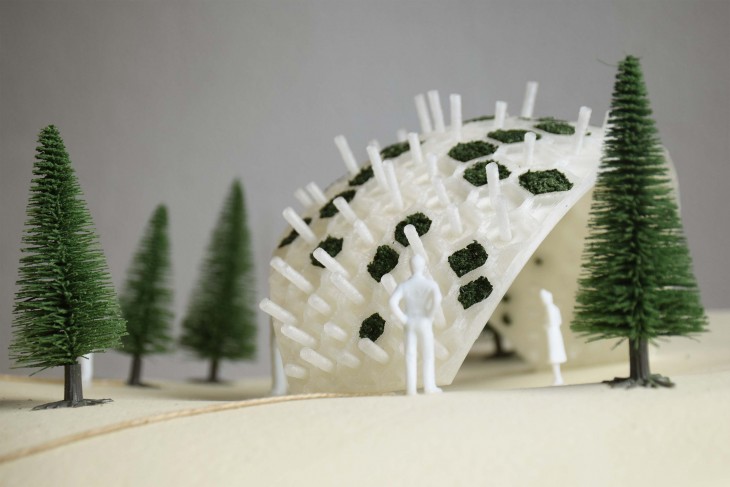
Use of organic materials and moss for the prototype
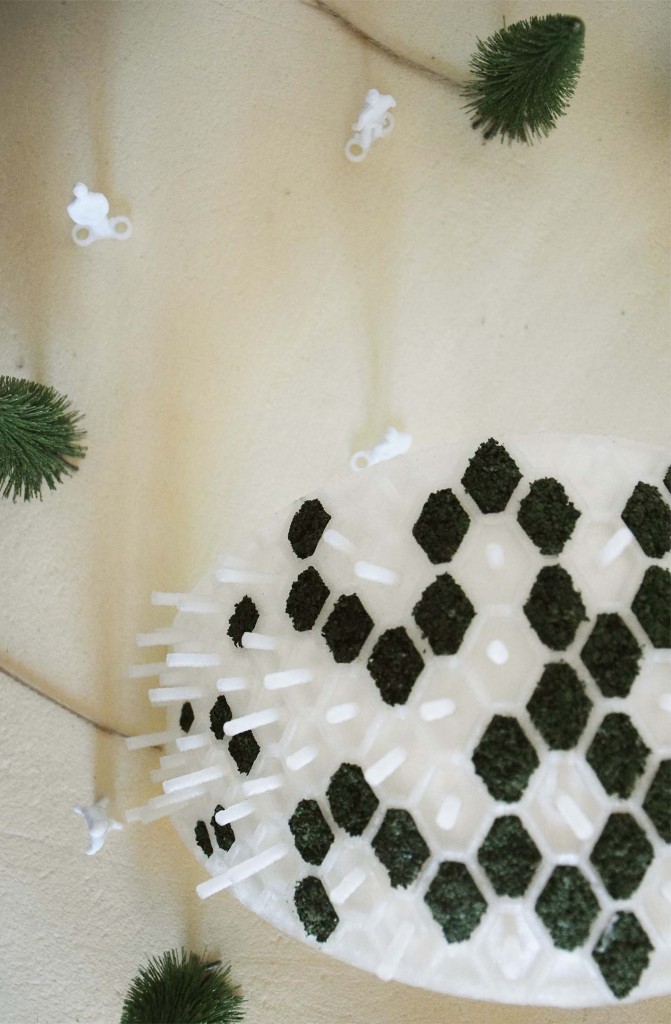
User-experience highlighting use of superconductors in hover-boards
Conclusion:
Thus, thru’ this prototype one will be able to go close to nature and at the same time logistics for the tribe in India will also be taken care of which was the prime objective.
Dhwani: The sound of nature – Off-grid campus is a project of IaaC, Institute for Advanced Architecture of Catalonia developed at Master of Advanced Architecture in 2015/16 by:
Student: Dhairya Thakkar
Faculty: Enric Ruiz Geli, Mireia Luzaragga